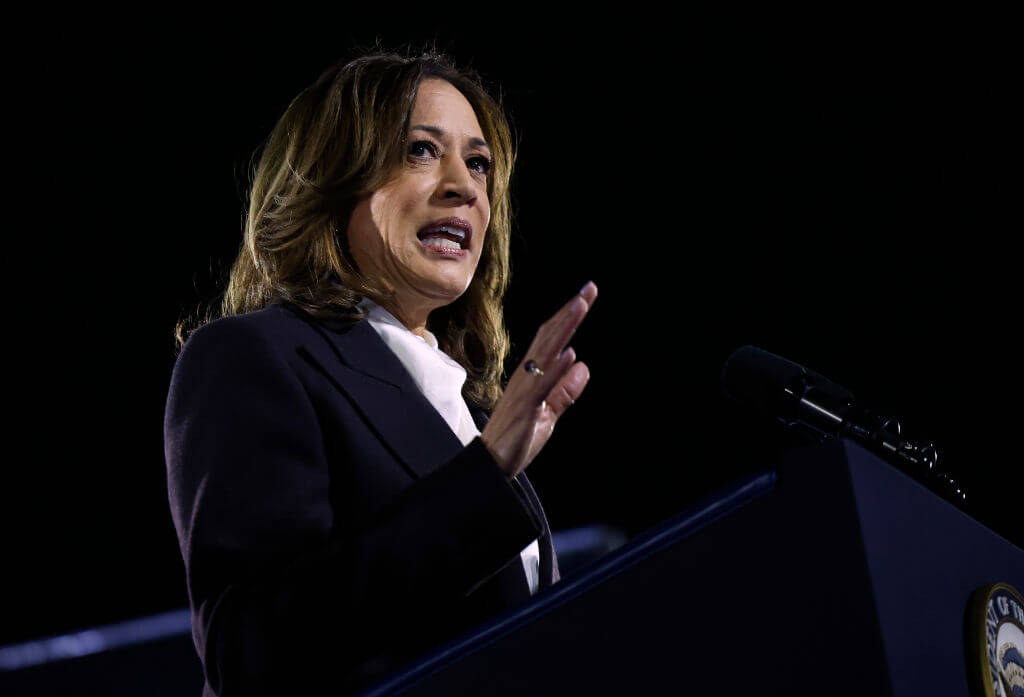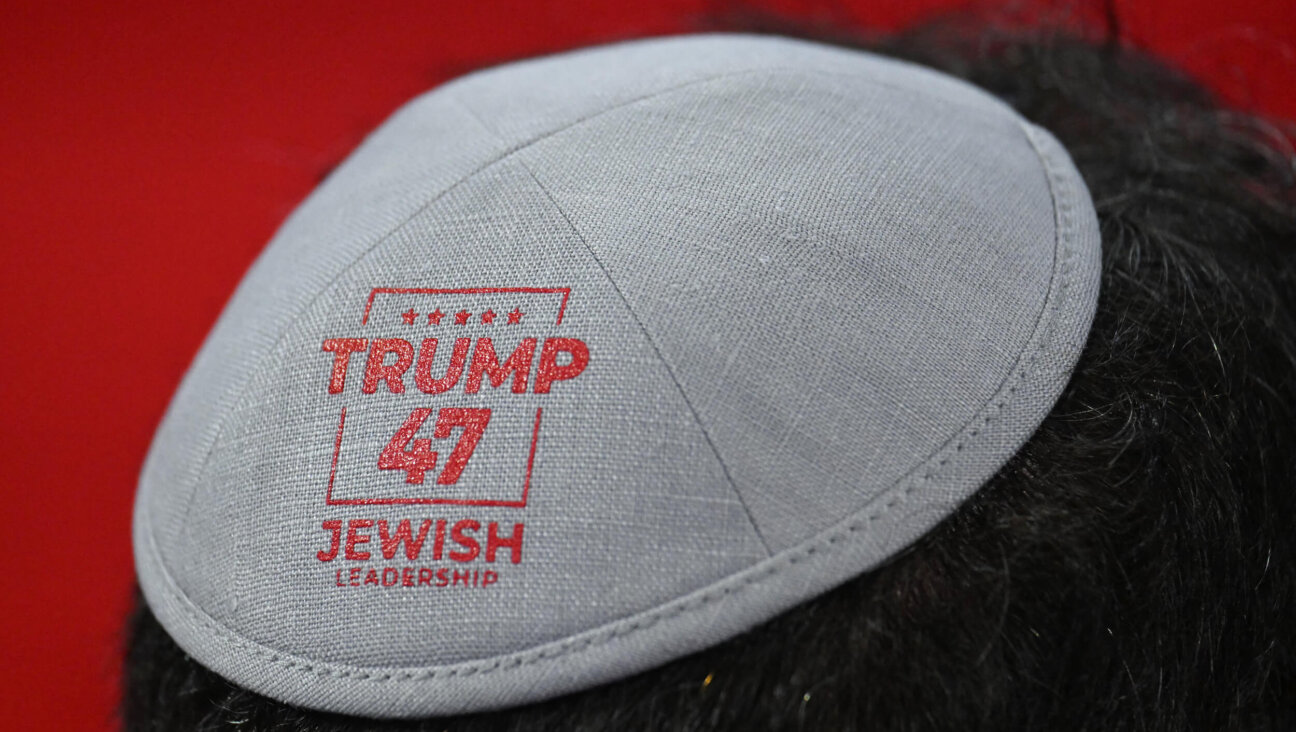A Wave of Young Families Washes Ashore in S. Florida
Strollers aren’t allowed in the Boca Raton Synagogue on the Sabbath, so each Saturday harried parents jockey beneath the wide awning for the prime spots to park their Peregos and Maclarens.
“You know how some places auction parking spots as fundraisers? Well, we’re considering offering reserved stroller spots,” said the synagogue’s rabbi, Kenneth Brander. “This is not a joke.”
It’s a typical Orthodox synagogue predicament — except for the fact that Brander’s synagogue is located in a place that calls to mind yacht-sized Cadillacs and humming golf carts more often than it does baby strollers pushed by religious families.
Those who think of Boca Raton as a place for well-heeled Jewish retirees playing their final rounds would be wise to think again. During the last few years, the area has experienced an unprecedented, explosive growth in Jewish population, young and old. The statistics speak for themselves: In 1970, there were a mere 1,000 Jews living in town. By 1984, there were 33,700, and by 1999, the last year a study was conducted in the Jewish community, there were 69,000. And the growth shows no signs of letting up.
Since Brander arrived at the Boca Raton Synagogue 11 years ago, his synagogue’s membership has exploded from 50 families to more than 500. The synagogue boasts a ritual bath, its own day school and a full-time youth director who oversees activities for some 900 children and teens. “Since Pesach, between 30 and 40 families have moved in,” said Brander, 40. “I’d guess that 60% of them are younger than I am now.”
While the growth at Brander’s synagogue is impressive, it is hardly unique. According Ira Sheskin, director of the Jewish Demography Project at the University of Miami, between 1985 and 1995 three other Orthodox synagogues were established in the community. They now serve some 300 families. Temple Beth El, a Reform synagogue, grew from 1,250 families to 1,800, while B’nai Torah Congregation, a Conservative synagogue, tripled in size to 900.
Today, South Palm Beach County — which includes the neighboring retirement meccas of Boynton Beach and Delray Beach — boasts the highest percentage of Jewish households, 47%, in the country, Sheskin said. By comparison, the next highest is nearby Broward County with 22%, followed by New York City with 16%.
“South Palm Beach is probably the fastest-growing Jewish community in the country, with the exception — maybe — of Las Vegas,” Sheskin said.
During the Forward’s lunchtime visit to Jon’s Place, a three-year-old kosher pizzeria in a typically Floridian strip-mall, the crowd is all ages: In one corner, a mother and her teenage son share a pizza; in another, two elderly women speak in hushed voices, while in the large center booth three generations of a family linger over lunch.
Business, according to owner Jon Surasky, a New York native, “is growing everyday. There’s growth in the community. Boca’s not a retirement town anymore.”
Then again, according to the most recent figures, it still is. Despite the influx of younger Jews — Boca’s population of children, for example, doubled to 6,400 between 1984 and 1995 — “this is clearly still a retirement Jewish community,” Sheskin said, noting that, in 1995, South Palm Beach County had the highest concentration of elderly in any Jewish community: 69%, more than double the second place contender, Miami.
Still, Sheskin noted, “There are as many children in Boca as there are in many Jewish communities.”
Brander doesn’t need statistics. “I think that there is clearly a growth of young families,” he said. “I think that it’s not only in the Orthodox community, it’s in all of the Jewish community. Since the study three years ago, two new day schools have opened. My synagogue has easily, easily, grown by 120, 150 families. The Hillel day school has easily grown by 100 kids in that time period.”
The Donna Klein Academy, a 700-student community day school, added a high school four years ago. “How could we be one of the biggest day schools in the country if we didn’t have young people?” asked Karen Feller, head of school. “All of the preschools are bursting.”
And the bars and health clubs. According to the 2000 U.S. Census, within the Boca Raton city limits, 27% of the population is under 25, 48% are between 25 and 59 and 25% are 60 and over.
Indeed, many newcomers — in other words, the majority of the Boca Jewish population — are pleasantly surprised by the youthful flavor of the town. Laura Cohen, a 30-year-old Brooklyn native, moved to Boca in 1999 with her husband, Meyer, and three children, ages 6, 4 and 2 months. “I thought that you go to Florida for vacation — you don’t work there, deal with your daily life there,” she said. “But we had heard about Boca, that it was an up-and-coming community with a lot of young couples. After we moved in, there was a huge influx of couples.
“The minute I moved here, I started making friends,” she said. “I spent my entire life in New York — and I would not go back.”
“In the Jewish community, there’s been a move to Sunbelt communities,” said Steve Gelfand, acting executive vice president of the Federation of South Palm Beach County. “The quality of life is pretty nice, and communities like ours have many amenities for people who want to affiliate to the Jewish community.”
The amenities include a Jewish community campus that boasts a fitness complex, assisted-living apartments and two day schools among its well-manicured 83 acres.
But surely some melanoma grows on South Florida’s sun-kissed glory. Where’s the culture, the folklore, the bagels? “I personally don’t miss anything,” said Steven Schauder, assistant executive director at the Friedman Commission for Jewish Education of the Palm Beaches and a transplanted New Yorker. “There are surprising amounts of cultural events you can find down here.”
Ditto for longing for the rich Jewish history of older communities. “There’s something exciting about being a part of a community that’s fresh and new,” he said.
And the new families keep coming and, perhaps most significantly, staying. “The families moving in are clearly younger and younger,” Brander said. “We used to say that instead of the leaves it was the license plates that changed in the fall. That’s changed.”
A message from our CEO & publisher Rachel Fishman Feddersen

I hope you appreciated this article. Before you go, I’d like to ask you to please support the Forward’s award-winning, nonprofit journalism during this critical time.
At a time when other newsrooms are closing or cutting back, the Forward has removed its paywall and invested additional resources to report on the ground from Israel and around the U.S. on the impact of the war, rising antisemitism and polarized discourse.
Readers like you make it all possible. Support our work by becoming a Forward Member and connect with our journalism and your community.
— Rachel Fishman Feddersen, Publisher and CEO






















